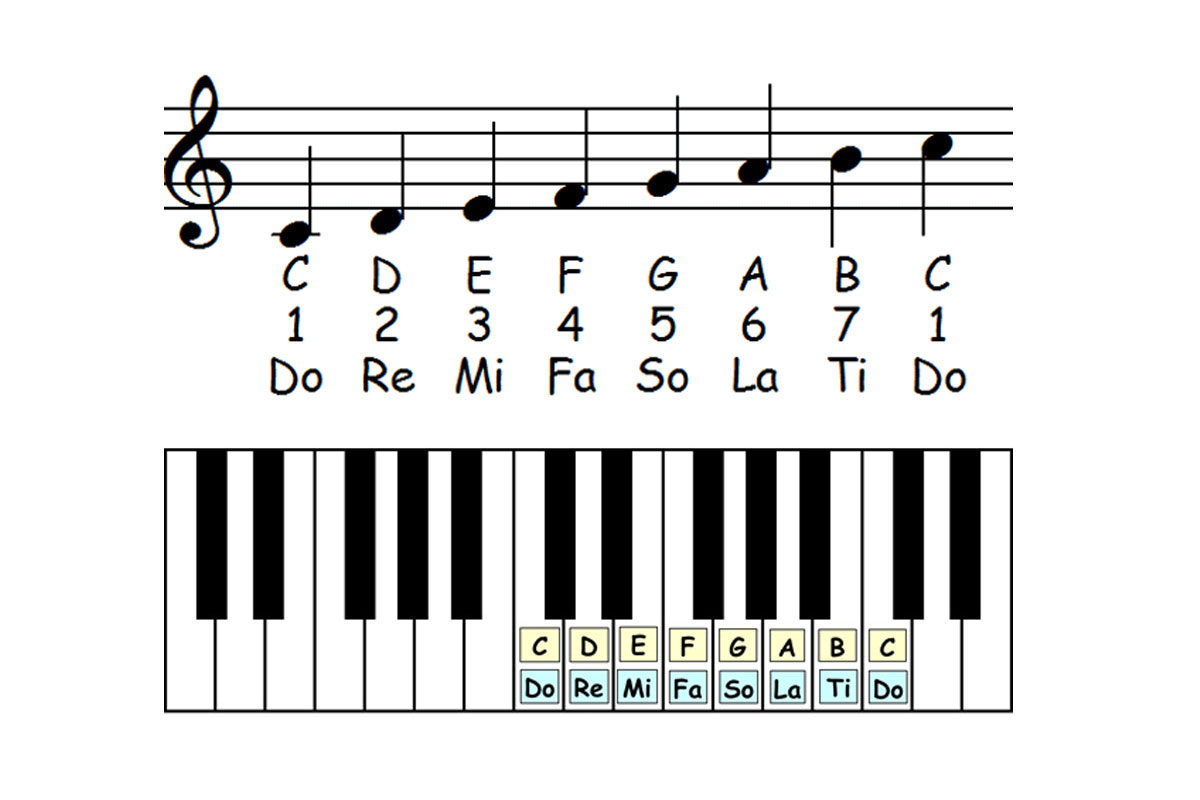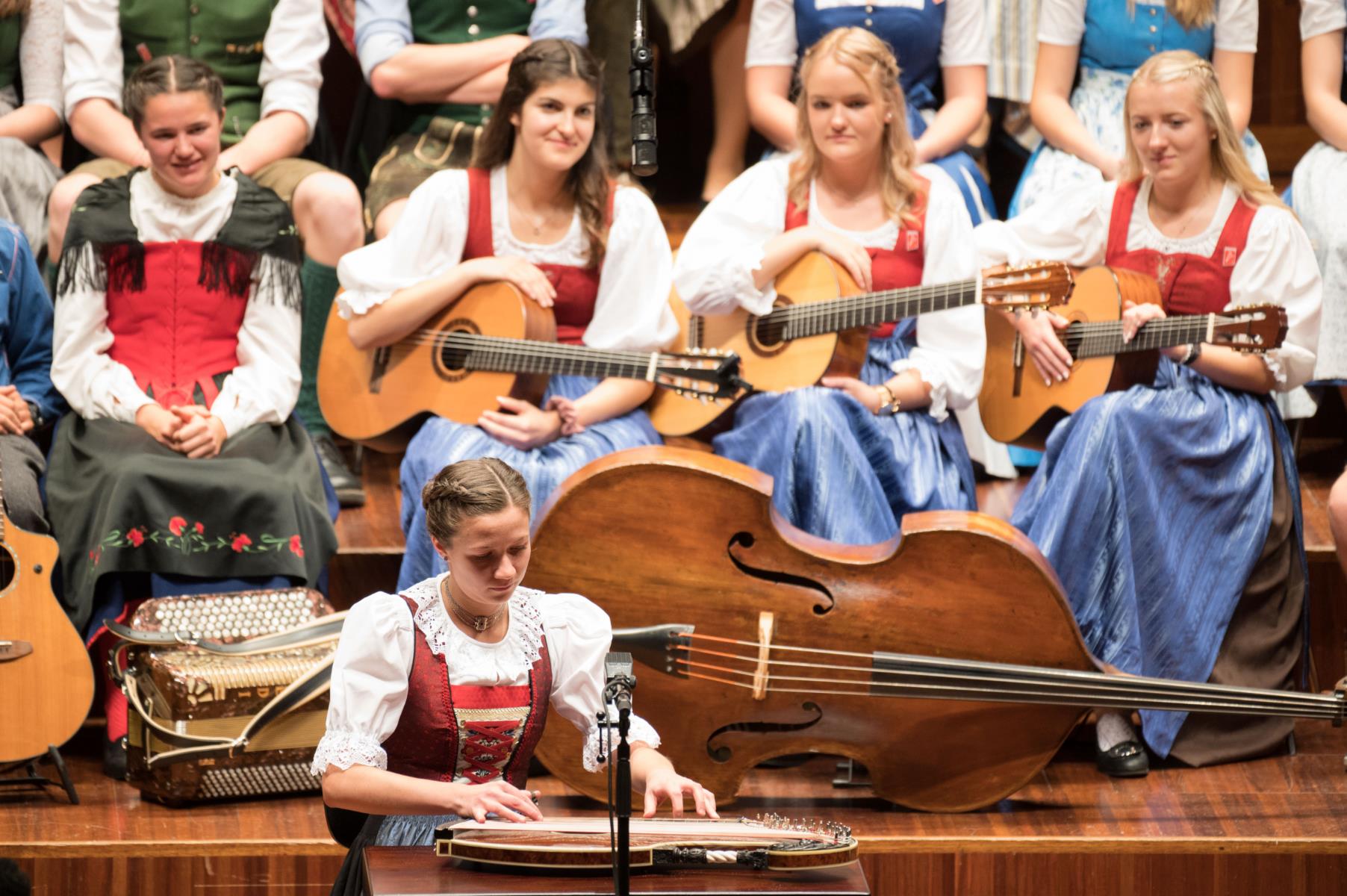Home>Genres>Folk>What Were The Major Influences Of Folk Music On The Recording Industry


Folk
What Were The Major Influences Of Folk Music On The Recording Industry
Modified: March 11, 2024
Discover the profound impact of folk music on the recording industry. Explore the major influences and cultural significance of this timeless genre.
(Many of the links in this article redirect to a specific reviewed product. Your purchase of these products through affiliate links helps to generate commission for AudioLover.com, at no extra cost. Learn more)
Table of Contents
Introduction
Folk music has played a significant role in shaping the recording industry, leaving an indelible mark on the musical landscape. This unique genre, characterized by its simplicity and storytelling nature, has captivated masses across generations. From its humble beginnings in rural communities to its widespread popularity in mainstream culture, folk music has left an enduring legacy.
The roots of folk music can be traced back to centuries-old traditions and oral storytelling, with each culture and region having its own distinct style. The advent of technology, particularly the recording industry, provided a platform for folk music to reach a wider audience and gain recognition. The fusion of traditional folk melodies and modern recording techniques propelled this genre into the limelight, influencing numerous other musical styles along the way.
This article explores the major influences of folk music on the recording industry throughout history. From the origins of folk music to its impact on musical styles and socio-political movements, we will delve into the profound and lasting impact of this genre.
Origins of Folk Music
Folk music has its origins deeply rooted in the cultural and historical experiences of communities around the world. It emerged as a means of storytelling, passing down traditions, and expressing the joys and struggles of everyday life. The early forms of folk music can be traced back to ancient civilizations, where songs and melodies were created and performed within local communities.
One of the defining characteristics of folk music is its authenticity and connection to specific cultures and regions. Folk songs often reflect the traditions, values, and beliefs of the people who composed and sang them. They serve as a form of oral history, preserving the cultural heritage of a community and providing insights into their way of life.
The origins of folk music vary across different parts of the world. In Europe, folk music can be traced back to medieval times when troubadours and minstrels would travel from village to village, performing songs and sharing stories. In North America, folk music has its roots in the songs of enslaved African Americans and the ballads of early settlers.
Traditional instruments such as the acoustic guitar, banjo, fiddle, and mandolin are commonly associated with folk music. These instruments, often handmade and passed down through generations, contribute to the distinct sound and character of folk music.
Over time, folk music evolved and adapted, incorporating elements from different cultures and musical styles. This genre has always had the ability to reflect the changing times and address social issues, making it a powerful form of expression and social commentary.
The advent of technology, particularly the recording industry, allowed folk music to transcend geographical boundaries and reach a wider audience. The recordings of folk songs not only preserved the traditional melodies but also introduced them to new listeners who may not have had access to live performances.
Today, folk music continues to evolve and reinvent itself, with contemporary artists blending traditional elements with modern influences. Despite the passage of time, the essence of folk music remains intact – a celebration of local communities, their stories, and their shared experiences.
Rise of the Recording Industry
The rise of the recording industry in the late 19th century revolutionized the way music was created, distributed, and consumed. Prior to this era, music was primarily experienced through live performances and sheet music. However, with the invention of the phonograph and subsequent advancements in recording technology, a new avenue for sharing and preserving music emerged.
The first commercially viable phonograph, invented by Thomas Edison in 1877, allowed sound to be mechanically recorded and reproduced. This breakthrough opened up a world of possibilities for musicians and music lovers. It provided an opportunity for artists to reach a broader audience and extend the longevity of their performances.
With the establishment of record labels such as Columbia Records and Victor Talking Machine Company (later known as RCA Victor), the recording industry began to flourish. These companies sought out talented musicians and recorded their performances onto discs made of shellac or later vinyl. These records were then sold or played on phonographs in households around the world.
The recording industry not only offered a means of capturing and preserving musical performances, but it also created new opportunities for artists to generate income. Musicians could now receive royalties based on the sales and airplay of their recordings, opening up a new revenue stream.
The impact of the recording industry extended beyond just the musicians themselves. It provided a platform for diverse genres of music, including folk, to be discovered and enjoyed by a wider audience. This newfound accessibility allowed for the proliferation of folk music, breaking through geographical barriers and capturing the hearts of listeners around the world.
The recording industry also played a role in shaping the cultural landscape. It allowed for the dissemination of music across different regions, promoting cultural exchange and inspiring musical innovation. This exchange of ideas and musical styles paved the way for the fusion of folk music with other genres, creating unique sounds and pushing the boundaries of traditional folk music.
As technology continued to advance, new formats such as cassette tapes, CDs, and digital streaming platforms emerged. Each new iteration provided greater convenience and accessibility for music lovers, enabling them to access a vast array of folk music recordings at the touch of a button.
Today, the recording industry remains a cornerstone of the music world, and folk music continues to thrive within its realm. The ability to capture the essence of folk music in a recording ensures that its legacy will endure for future generations to enjoy and appreciate.
Popularization of Folk Music
The popularization of folk music can be attributed to a confluence of factors, including the rise of the recording industry, the emergence of influential artists, and its connection to social and cultural movements. As folk music gained wider recognition and appreciation, it became an integral part of mainstream music and had a significant impact on popular culture.
One of the key contributors to the popularization of folk music was the folk revival of the mid-20th century. This movement, characterized by a renewed interest in traditional folk music, saw a resurgence in the popularity of folk artists and their recordings. Influential figures such as Woody Guthrie, Pete Seeger, and Joan Baez brought folk music into the public eye, using their voices and songs to address social and political issues of the time.
During the 1960s and 1970s, folk music experienced a surge in popularity, fueled by the counterculture movement and the search for authenticity in music. The folk music of this era reflected the changing times and served as a form of protest against war, inequality, and injustice. Artists like Bob Dylan, Simon & Garfunkel, and Joni Mitchell became household names, captivating audiences with their insightful lyrics and captivating melodies.
The popularity of folk music extended beyond the United States and reached a global audience. Artists from various countries, such as Donovan from the United Kingdom and Violeta Parra from Chile, contributed to the international recognition of folk music and its diverse cultural expressions.
The influence of folk music also permeated other genres, leading to the emergence of folk-rock and folk-pop as significant musical movements. Bands like The Byrds and Crosby, Stills, Nash & Young embraced folk elements in their music, blending them with rock and pop sensibilities. This fusion sparked a new wave of creativity and expanded the reach of folk music to a wider audience.
The popularization of folk music was not limited to traditional recordings. Films and soundtracks played a crucial role in introducing folk music to new audiences. Movies such as “Inside Llewyn Davis” and “O Brother, Where Art Thou?” showcased the power and beauty of folk music, leading to a renewed interest in the genre among viewers who may not have been previously exposed to it.
In recent years, folk music has continued to evolve and adapt, with contemporary artists shaping its sound and pushing its boundaries. The popularity of folk festivals, both large and small, has provided a platform for emerging artists to share their music with enthusiasts from all walks of life.
Overall, the popularization of folk music has had a transformative impact on the genre itself and the broader music industry. Folk music’s ability to resonate with listeners on a deeply emotional and personal level has ensured its enduring relevance and ensured its place in the musical landscape for generations to come.
The Impact of Folk Music on the Recording Industry
Folk music has had a profound impact on the recording industry, shaping its direction and influencing the way music is created, consumed, and distributed. From the early days of recording technology to the present, folk music has left an indelible mark, both artistically and commercially.
One of the key ways in which folk music has impacted the recording industry is through its emphasis on authenticity and storytelling. Folk songs often capture the essence of human experiences, exploring themes such as love, loss, struggles, and triumphs. This focus on meaningful lyrics and evocative melodies has shaped the approach to songwriting and recording in various genres.
The simplicity and acoustic nature of folk music have also influenced the production techniques employed in the recording industry. Folk artists typically rely on acoustic instruments and minimalistic arrangements, allowing the nuances of their performances to shine through. This stripped-down aesthetic has influenced producers and engineers, leading to the development of recording techniques that focus on capturing the raw and intimate qualities of a musical performance.
Folk music’s connection to grassroots movements and the desire for social change has also impacted the recording industry. Folk artists have often used their platform to shed light on important social and political issues, using music as a vehicle for activism and awareness. Their recordings have served as rallying cries for movements such as civil rights, anti-war protests, and environmental activism.
Furthermore, folk music’s connection to regional and cultural identities has broadened the scope of the recording industry. By embracing folk music from different parts of the world, record labels and artists have expanded their audiences and facilitated cross-cultural exchange. This has resulted in an increased demand for diverse music recordings and a more inclusive representation of global musical traditions.
The commercial success of folk music recordings has also played a pivotal role in the growth and development of the recording industry. Folk artists such as Bob Dylan, Simon & Garfunkel, and Joni Mitchell achieved mainstream popularity and commercial success, reaching millions of listeners through their recorded albums. This success paved the way for other independent and folk-influenced artists to secure record deals and gain exposure in the industry.
Moreover, folk music’s enduring popularity has contributed to the longevity and profitability of the recording industry. Folk albums continue to be produced and sold, attracting dedicated fan bases and earning recognition in various music award ceremonies. The consistent demand for folk music recordings has created a niche market within the industry, allowing for the continued support and production of this genre.
In summary, the impact of folk music on the recording industry has been far-reaching and multi-faceted. From influencing production techniques to promoting social change, folk music has shaped the way music is recorded, consumed, and distributed. Its authenticity, storytelling, and cultural significance continue to propel the recording industry forward, ensuring the continued appreciation and preservation of this timeless genre.
Folk Music’s Influence on Musical Styles
Folk music has had a profound influence on various musical styles, contributing to the evolution and enrichment of the musical landscape. Its simple yet powerful melodies, heartfelt lyrics, and storytelling nature have left an indelible mark on genres ranging from rock and pop to country and world music.
One of the prominent ways in which folk music has influenced other genres is through the incorporation of acoustic instrumentation and folk-style songwriting. Artists like Bob Dylan, Neil Young, and Simon & Garfunkel infused folk elements into their music, creating a distinct blend of folk-rock that resonated with audiences. This fusion of genres allowed for experimentation with different sounds, instruments, and song structures.
Furthermore, folk music has influenced the lyrical content and themes explored in various genres. Folk songs often address social and political issues, personal experiences, and universal emotions. This emphasis on storytelling and meaningful lyrics has influenced songwriters across different genres, encouraging them to delve deeper into personal narratives and explore a wide range of themes.
The influence of folk music can be heard in the introspective and poetic lyrics of singer-songwriters in the 1960s and 1970s. Artists like Joni Mitchell, James Taylor, and Leonard Cohen drew inspiration from folk music’s authenticity and use of metaphorical language, infusing their music with introspection and depth.
Folk music’s impact on country music is also evident, with artists like Johnny Cash and Emmylou Harris incorporating folk elements into their sound and songwriting. The storytelling elements of folk music resonate with the narrative-driven tradition of country music, further blurring the boundaries between these two genres.
World music, too, has been influenced by the sounds and rhythms of folk music from different cultures. Folk music from regions such as Africa, the Middle East, and Latin America has found its way into the sonic tapestry of world music, enriching the genre with its unique melodies and traditional instruments.
Besides its influence on specific genres, folk music has also played a significant role in shaping the concept of “unplugged” or acoustic performances. The idea of stripping down a song to its core elements, often associated with folk music, has been adopted by artists from various genres to create intimate and authentic live performances.
Moreover, the revival of interest in folk music and its fusion with electronic elements have given rise to genres like “folktronica.” Artists such as Bon Iver, Fleet Foxes, and Sufjan Stevens have seamlessly blended folk-inspired melodies and instrumentation with electronic production techniques, forging a unique and innovative musical landscape.
In summary, folk music’s influence on various musical styles is expansive and enduring. Its impact can be heard in the blending of genres, the storytelling traditions of songwriting, and the integration of acoustic elements into diverse musical landscapes. Folk music’s lasting legacy is a testament to its ability to transcend boundaries and inspire musicians to create music that resonates with people from all walks of life.
Social and Political Influence of Folk Music
Folk music has long been a powerful force in driving social and political change. Embedded within its lyrics and melodies are the voices of the people, reflecting their struggles, aspirations, and calls for justice. Throughout history, folk music has played a vital role in inspiring social movements, raising awareness about pressing issues, and giving voice to the marginalized and oppressed.
One of the defining characteristics of folk music is its ability to convey stories and capture the essence of social issues. From labor strikes to civil rights movements, folk songs have been used as anthems of resistance and calls to action. Artists like Pete Seeger, Woody Guthrie, and Joan Baez became icons of protest music, using their platform to shed light on inequality, discrimination, and injustice.
Folk music has often been closely intertwined with social and political movements. During the Civil Rights Movement in the United States, folk songs played a crucial role in inspiring and uniting activists. Songs like “We Shall Overcome” and “Blowin’ in the Wind” became powerful tools for expressing the collective struggle against racial segregation and discrimination.
Similarly, during the anti-war movements of the 1960s and 1970s, folk music became a rallying cry for peace. Artists like Bob Dylan and Crosby, Stills, Nash & Young used their songs to critique war and advocate for social change. Their poignant lyrics and evocative melodies resonated with a generation seeking an end to violence and conflict.
Beyond the United States, folk music has played a significant role in inspiring social and political movements across the globe. In South Africa, artists like Miriam Makeba and Hugh Masekela used their music to speak out against apartheid and promote racial equality. The Chilean folk singer Violeta Parra became a symbol of resistance during the oppressive Pinochet regime with her songs of protest and hope.
Folk music’s impact transcends specific movements and events. It resonates with individuals on a personal level, providing solace, empowerment, and a sense of communal identity. Folk songs often serve as a reminder of shared histories, cultural heritage, and the resilience of communities.
Furthermore, folk music has the ability to bring people together, fostering a sense of unity and solidarity. Through shared performances and sing-alongs, folk music creates a space for individuals to connect, engage, and find common ground. It breaks down barriers and promotes understanding across diverse backgrounds, fostering a sense of empathy and compassion.
Today, folk music continues to serve as a catalyst for social change. Artists like Hozier and First Aid Kit tackle issues such as environmental degradation, gender equality, and mental health through their poignant and introspective folk-inspired songs. Their music engages audiences in conversations about pressing social issues and inspires them to take action.
In summary, the social and political influence of folk music cannot be overstated. From labor movements to civil rights struggles and beyond, folk music has played a crucial role in giving voice to marginalized communities, inspiring social change, and fostering unity and solidarity. Its power lies in its ability to transcend boundaries and connect individuals through shared experiences, making it an integral part of social movements and the fight for a more just and equitable society.
Folk Music as a Source of Inspiration
Folk music has long served as a wellspring of inspiration for artists across various disciplines. Its timeless melodies, heartfelt lyrics, and rich cultural heritage have captivated and influenced individuals in literature, visual arts, theater, and beyond. Whether drawing upon its traditional roots or incorporating modern interpretations, folk music has been a creative catalyst for countless artistic endeavors.
One area where folk music has been a significant source of inspiration is in the world of literature. Writers and poets have often turned to folk songs and ballads for inspiration, infusing their work with the storytelling and emotional depth found within these melodies. The works of renowned authors such as Thomas Hardy, Robert Burns, and Zora Neale Hurston feature lyrical references to folk songs and draw upon their themes, adding a layer of authenticity and cultural resonance to their prose.
Visual artists have also found inspiration in folk music, utilizing its imagery and narrative elements in their creations. From paintings to sculptures, folk music often serves as a muse for capturing the essence of a culture or a specific time period. Artists like Marc Chagall and Romare Bearden have incorporated folk motifs and symbols into their artwork, blurring the lines between visual and musical expression.
In the realm of theater and film, folk music has been a source of inspiration for composers and playwrights, providing a soundtrack that enhances narratives and amplifies emotions. Musicals such as “Oklahoma!” and “Fiddler on the Roof” draw upon folk traditions to tell stories of communities and cultural identities. Filmmakers frequently incorporate folk songs in their soundtracks to evoke a sense of time, place, and emotional depth, whether it’s the Coen brothers’ use of traditional folk songs in “Inside Llewyn Davis” or the integration of folk-inspired music in Wes Anderson’s films.
Folk music’s influence can be seen in contemporary music as well. Many modern musicians and bands draw inspiration from traditional folk melodies and storytelling structures, infusing their own style and personality into the genre. Artists like Mumford & Sons, The Lumineers, and Fleet Foxes pay homage to folk music’s roots while adding their unique interpretations, creating a fusion of old and new that resonates with today’s listeners.
Beyond the realms of specific artistic disciplines, folk music has also inspired social and cultural movements. Activists, community organizers, and educators have used folk songs to foster a sense of unity, empowerment, and shared values. Whether through collective singing at protests, community gatherings, or music festivals, folk music becomes a unifying force that brings people together, sparks dialogue, and promotes social engagement.
Moreover, folk music’s storytelling and cultural significance have inspired individuals to deepen their connection to their own heritage and to explore other cultures. Learning to play folk instruments, participating in folk music workshops, and engaging in traditional dance forms are ways in which people have embraced folk music as a means of cultural exploration, preservation, and celebration.
In summary, folk music continues to be a wellspring of inspiration across artistic endeavors. Its melodies, lyrics, and cultural significance have permeated literature, visual arts, theater, and cinema, influencing and enriching creative expressions in numerous forms. As an art form deeply rooted in the human experience, folk music remains a source of inspiration, creativity, and cultural appreciation in our modern world.
Conclusion
Folk music has left an indelible mark on the recording industry and the cultural landscape as a whole. From its origins rooted in rich traditions to its widespread popularity and enduring influence, folk music has captivated listeners across generations and transcended barriers of time, geography, and genre.
The rise of the recording industry provided folk music with a broader platform, ensuring its reach to a wider audience and enabling the preservation of traditional melodies. Folk music’s authenticity, simplicity, and emphasis on storytelling have influenced production techniques, songwriting approaches, and the blending of genres.
Folk music’s impact extends beyond the confines of the recording studio. It has served as a catalyst for social and political change, providing a powerful voice for marginalized communities and inspiring movements of justice and equality. Its influence can be felt not only in music but also in literature, visual arts, theater, and film, where it continues to inspire creativity and provoke thought.
Folk music’s ability to resonate with individuals on a personal and emotional level has made it a source of inspiration for artists and audiences alike. Whether drawing upon its traditional roots or embracing modern interpretations, folk music continues to ignite creativity, connect people, and foster a sense of shared cultural heritage.
In conclusion, folk music’s impact on the recording industry and its far-reaching influence across artistic disciplines is undeniable. It remains an integral part of our collective musical landscape, enriching our lives, inspiring change, and inviting us to reflect upon the diverse and interconnected fabric of the human experience.











